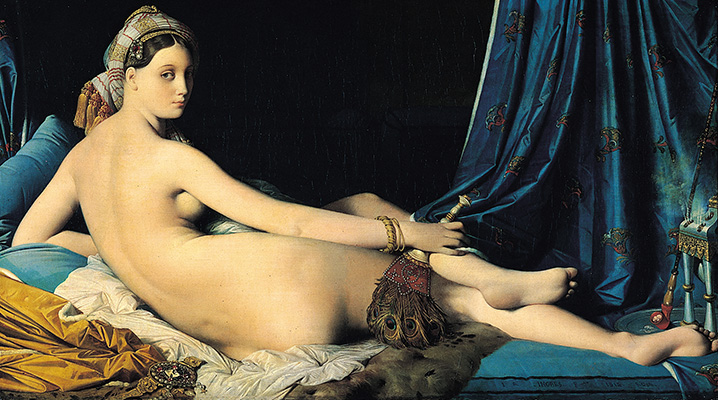
Grande Odalisque, also known as Une Odalisque or La Grande Odalisque, is an oil painting of 1814 by Jean Auguste Dominique Ingres depicting an odalisque, or concubine. Ingres' contemporaries considered the work to signify Ingres' break from Neoclassicism, indicating a shift toward exotic Romanticism.
Grande Odalisque attracted wide criticism when it was first shown. It has been especially noted for the elongated proportions and lack of anatomical realism. The work is housed in the Louvre, Paris.
This eclectic mix of styles, combining classical form with Romantic themes, prompted harsh criticism when it was first shown in 1814. Critics viewed Ingres as a rebel against the contemporary style of form and content. When the painting was first shown in the Salon of 1819, one critic remarked that the work had "neither bones nor muscle, neither blood, nor life, nor relief, indeed nothing that constitutes imitation".[3] This echoed the general view that Ingres had disregarded anatomical realism.[4] Ingres instead favored long lines to convey curvature and sensuality, as well as abundant, even light to tone down the volume. Ingres continued to be criticized for his work until the mid-1820s.
Product Details
| Year Created: |
1814 |
| Medium: |
Oil on canvas |
| Dimensions: |
89 cm x 163 cm |
| Price: |
$175.00 |
| Genres: |
Romanticism
|
| Subjects: |
People
|
Louvre Museum
Native Museum Name: Musée du Louvre
Residing Country: France
Residing City: Paris
Lattitude: 49
Longitude: 2
There is no review for this artwork